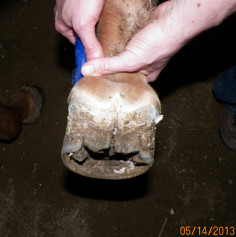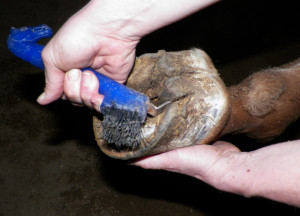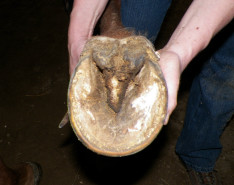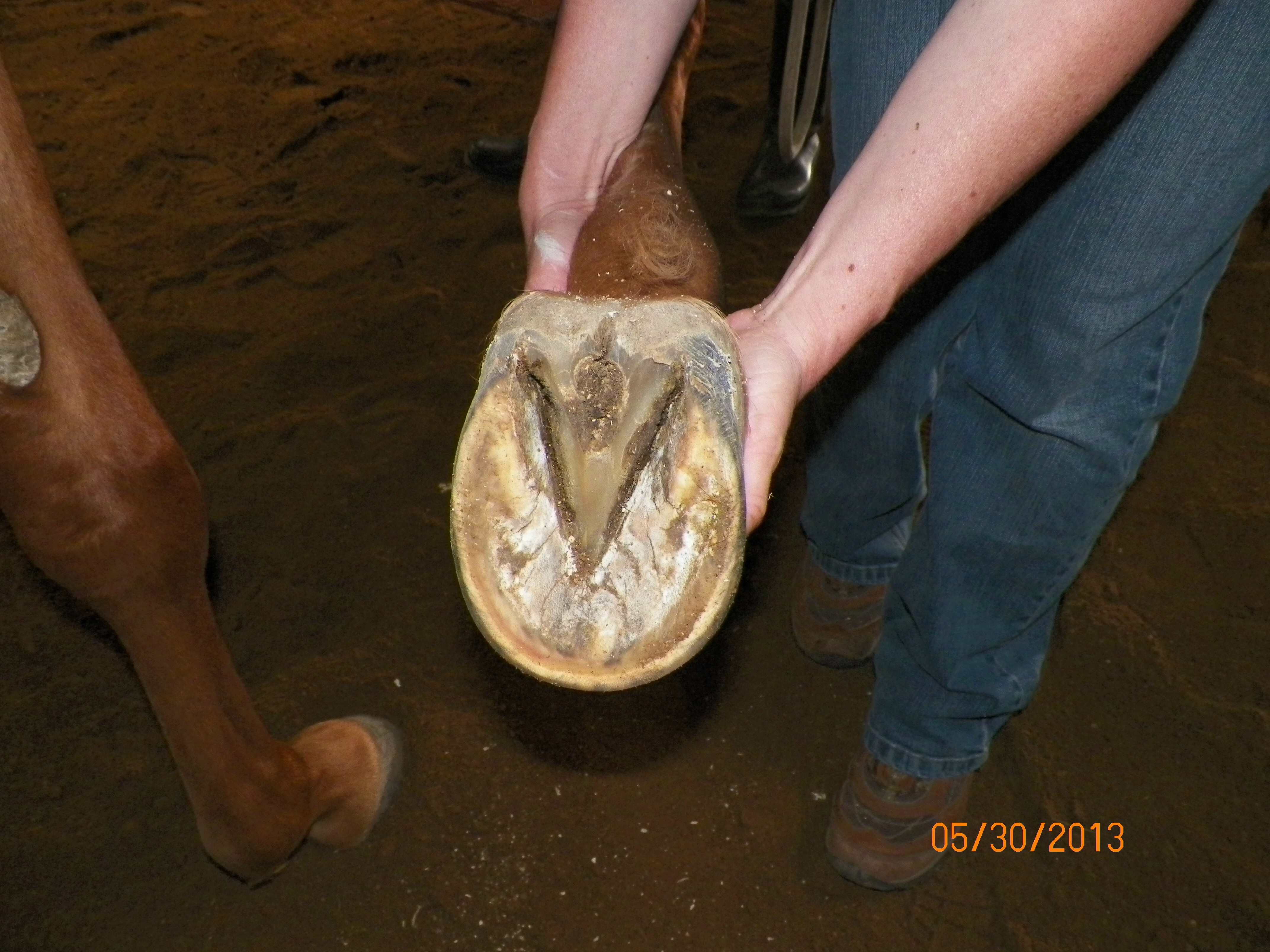
A simple definition of thrush is a bacterial and/or fungal infection of a horse’s frog. It only affects the soft tissue of the frog and doesn’t often cause any other problems. It has a thick black appearance.
As I said, it is a simple definition. Yes, thrush is a bacterial/ fungal infection of the frog and it can look like black, sticky tar. There is often much more to it than this.
I often find thrush in feet of horses I am called on to check for lameness. The call goes something like this: The client tells me, “Doc, I don’t know where else to turn. He’s been flexed and trotted and x-rayed and nothing really showed up. We think it’s up in the shoulder. Can you put some magic needles in or adjust it so he’s sound?”
And then I pick up the foot and find something that looks like this photo below: An unbalanced foot with very deep sulci. The medial sulcus is the huge crack going up into the coronary band. You might be able to appreciate the wavy appearance of the coronary band as it swoops up on the sides of the foot. I would be lame too!! Now, this case has turned into a combination of conventional and integrated diagnostics and care. The infection and the balance of the foot must be addressed before anything else will work or hold.

Here, you can see how deep the sulcus is. The hoof pick is down in and up under a flap of frog. The heels were pulled together. The frog in the lower right photo, shows just how diseased the entire body of the frog was. This wasn’t just in the sulci of the feet. This is one rotten foot. This filly had surgery to remove a bone chip in her fetlock & then was put on stall rest for healing. The combination of decreased movement, stall conditions (which were very clean & good), surgery and recovery started this case. She had significant disease in both front feet.

For some reason, the owner of this filly was told she would NEVER be sound and humane euthanasia would be the best option for her.
We did a full lameness, Acupuncture and & spinal evaluation on her. She became sound when her feet were blocked with an anesthetic medication. Her feet were treated with a good soak in Clean Trax solution and No Thrush powder was left for daily applications. Acupuncture and adjustments were used to clear heat, stagnation, and restrictions from her lower cervical (neck) vertebra. The same farrier who recommended our services was going to be there in a few days. I contacted him to discuss what had been done & he would trim her when he came next. I also recommended turn out and a set of in-hand exercises to be done.


These are her feet just two weeks after. What a difference!! The frog is much healthier in this photo. The entire hoof looks better. The filly was walking much better too. She was still off. The lower cervical vertebra had restrictions once again. She required adjustments for 6 months after the actual disease had been cleared from her frogs. Restrictions in the lower cervical vertebra can inhibit the normal blood flow and normal nerve inputs, both sensory and motor from the front legs and feet. These restrictions can contribute to thrush, laminitis (founder) and navicular syndrome to name a few.
Today, this filly is started under saddle and just a neat little horse to work with. We love a happy ending!
